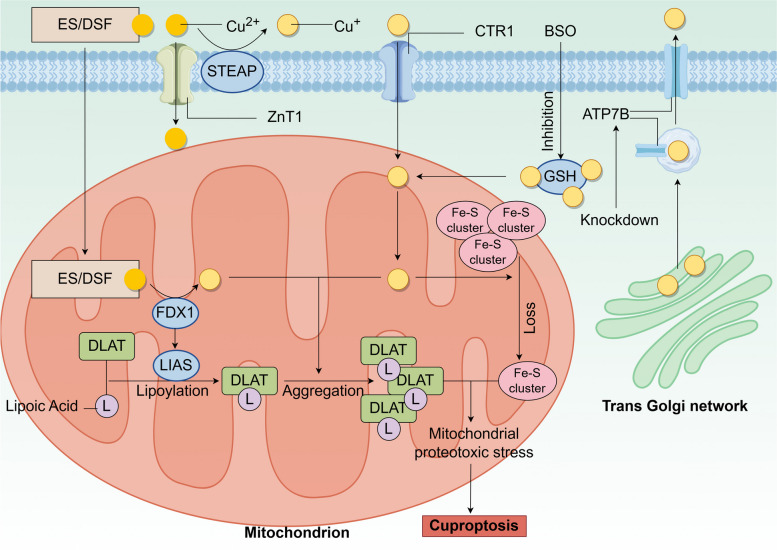Fig. 2.
The mechanism of cuproptosis. Cuproptosis is triggered by excessive accumulation of intracellular copper, which can be achieved in several ways: (1) Abnormalities in copper transport proteins, such as increased expression of SLC31A1, ZnT1 or decreased ATP7B. (2) Direct transport of Cu2+ into the cell via the copper ion carrier ES or DSF. (3) Inhibition of the synthesis of the copper chelator GSH by BSO leading to copper release from GSH. Excess copper subsequently leads to the reduction of Fe-S clusters, aggregation of lipoylated DLAT, and ROS production, which causes mitochondrial proteotoxic stress leading to cuproptosis

